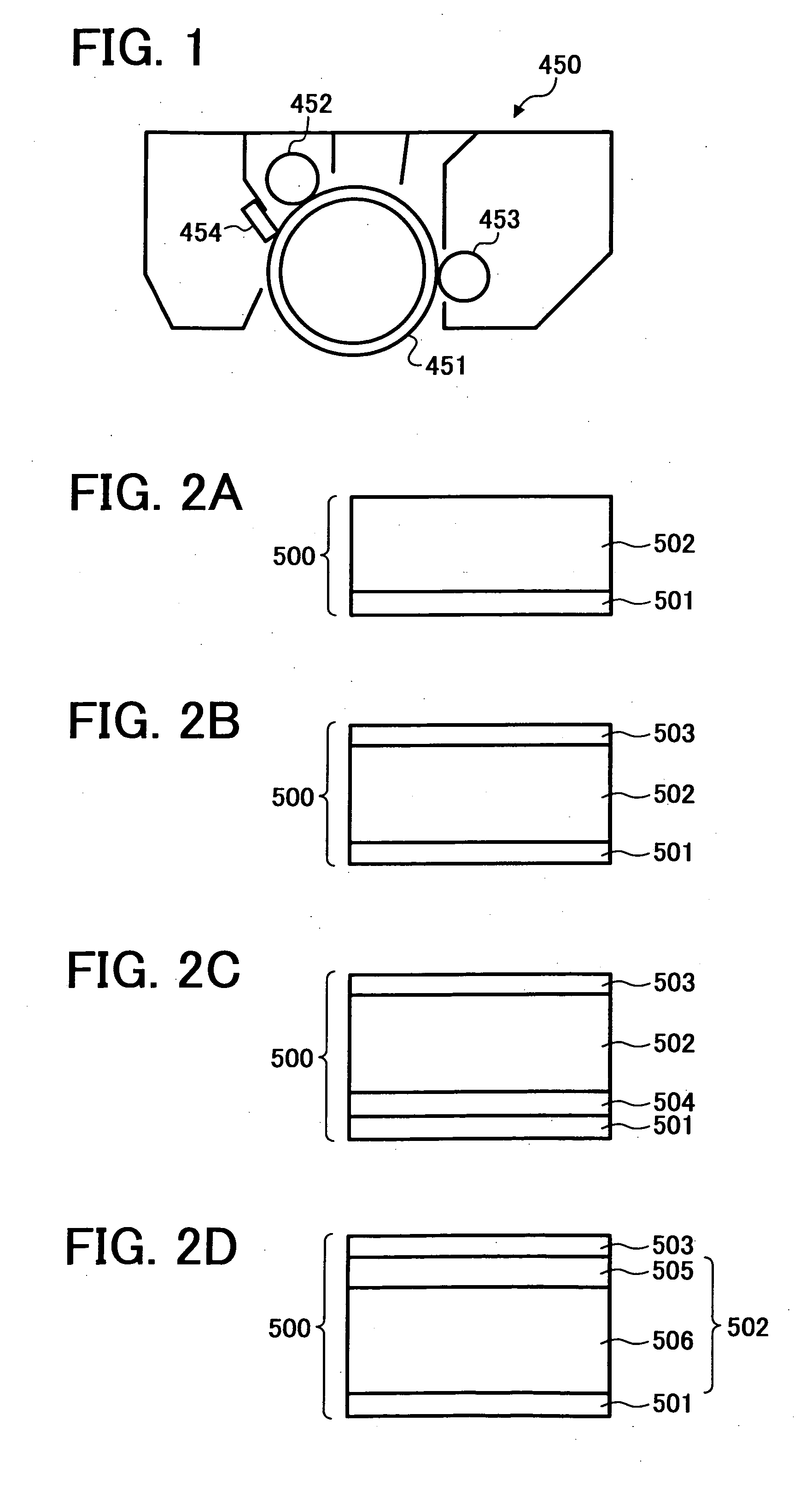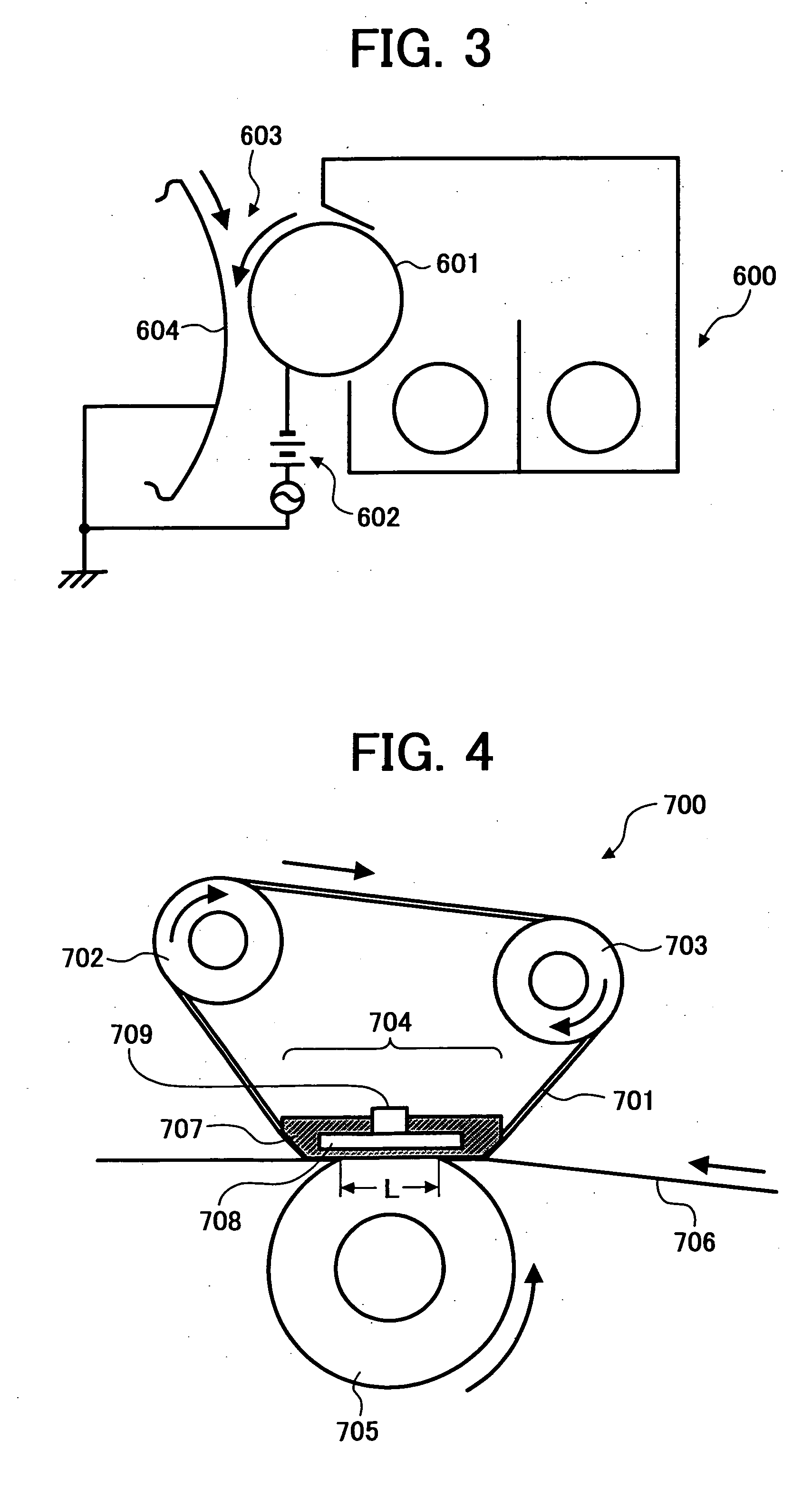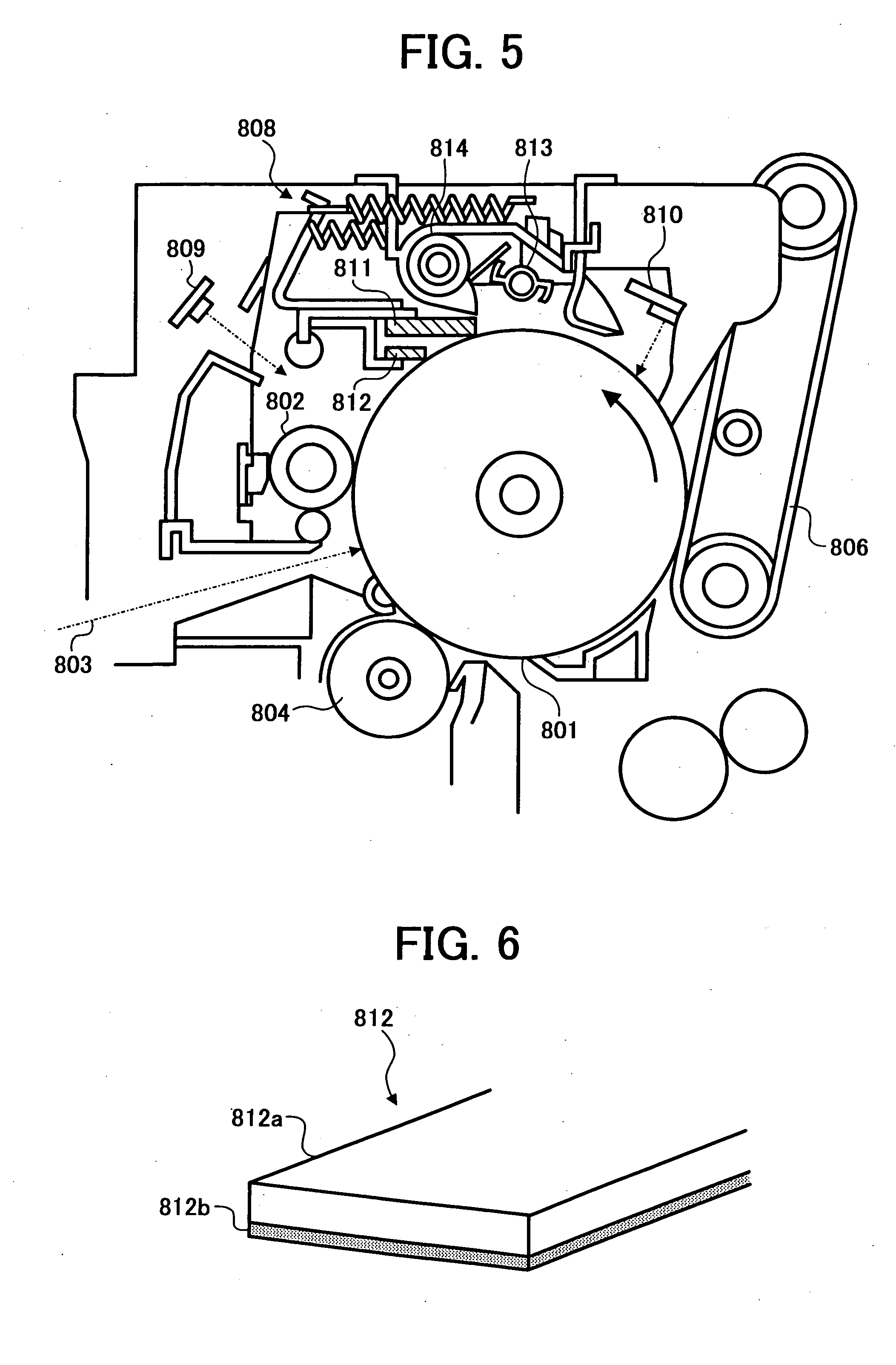Method of preparing a toner, developer including the toner, container containing the toner, and image forming method and process cartridge using the toner
a technology of toner and developer, applied in the field of preparation of toner, can solve the problems of large difference between the temperature of the transfer material that passes and the temperature of the transfer material that does not pass, and the heating of the fixing method of the heat roller, so as to achieve good chargeability, fluidity and transferability, and high quality images.
- Summary
- Abstract
- Description
- Claims
- Application Information
AI Technical Summary
Benefits of technology
Problems solved by technology
Method used
Image
Examples
preparation example 1
[0296] 64 parts of ester wax were added into a monomer mixture including 108 parts of styrene, 39 parts of n-butylacrylate, 9.6 parts of methacrylate, and the mixture was heated to have a temperature of 80° C. to dissolve the ester wax therein to prepare a monomer solution. On the other hand, a surfactant solution (an aqueous medium) wherein 7.0 parts of sodium dodecylbenzenesulfonate were dissolved in 2,400 parts of ion-exchange water was put in a separable flask having a capacity of 3.0 L, a stirrer, a temperature sensor, a cooling pipe and a nitrogen introducer. The surfactant solution was heated to have a temperature of 80° C.
[0297] while stirred at 360 rpm. The monomer solution (80° C.) was mixed and dispersed in the surfactant solution (80° C.) in the separable flask by a mechanical disperser having a circulating route to prepare a dispersion including emulsified particles (oil droplets) having a uniform dispersed particle diameter. A polymerization initiator wherein 0.8 part...
preparation example 2
[0302] 12 parts of styrene, 7 parts of a carbon black (#25B from Mitsubishi Chemical Corporation) and 1 part of a charge controlling agent (SPIRON BLACK TRH from Hodogaya Chemical Co., Ltd.) were mixed and dispersed by a sand mill from Kansai Paint Co., Ltd. for 12 hrs to prepare a mixture. 60 parts of styrene, 18 parts of n-butylacrylate, 3 parts of methacrylate, 0.3 parts of divinylbenzene, 0.6 parts of t-dodecylmercaptan, 10 parts of pentaerythritol tetrastearate having a purity of 60% of stearate and 6 parts of ester wax were mixed, stirred and uniformly dispersed by T.K. HOMOMIXER from TOKUSHU KIKA KOGYO CO., LTD. with a high shearing force at 11,000 rpm to prepare a [polymerizing monomer constituents (mixture) for core].
[0303] 5 parts of methylmethacrylate and 100 parts of water were finely dispersed by an ultrasonic emulsifier from TOKUSHU KIKA KOGYO CO., LTD. to prepare a [polymerizing monomer aqueous dispersion for shell].
[0304] An aqueous solution wherein 7 parts of sodi...
preparation example 3
[0306] 2,000 parts of methanol and 100 parts of polyvinylpyrrolidone were put in a closable reactor vessel rotating in a water tank having a constant temperature to prepare a mixture, and which was stirred for about 1 hr at a normal temperature to prepare a [hydrophilic organic liquid]. Then, the polyvinylpyrrolidone was completely dissolved.
[0307] 53 parts of styrene, 43 parts of methylacrylate, 3 parts of methacrylate, 3.0 parts of 1,3-butandioldimethacrylate and 0.5 parts of t-dodecylmercaptan were added into 250 parts of methanol solution wherein a dispersion stabilizer was dispersed in a closable reactor vessel rotating in a water tank having a constant temperature. The reactor vessel was rotated to mix the mixture and a N2 gas was blown therein to completely let the air out thereof to close the reactor vessel.
[0308] After the reactor vessel was rotated in the water tank at 60° C. and 100 rpm for 1 hr, 1.0 part of 2,2′-azobisisobutylnitrile was added therein while a N2 gas wa...
PUM
| Property | Measurement | Unit |
|---|---|---|
| diameter | aaaaa | aaaaa |
| diameter | aaaaa | aaaaa |
| critical temperature | aaaaa | aaaaa |
Abstract
Description
Claims
Application Information
 Login to View More
Login to View More - R&D
- Intellectual Property
- Life Sciences
- Materials
- Tech Scout
- Unparalleled Data Quality
- Higher Quality Content
- 60% Fewer Hallucinations
Browse by: Latest US Patents, China's latest patents, Technical Efficacy Thesaurus, Application Domain, Technology Topic, Popular Technical Reports.
© 2025 PatSnap. All rights reserved.Legal|Privacy policy|Modern Slavery Act Transparency Statement|Sitemap|About US| Contact US: help@patsnap.com



